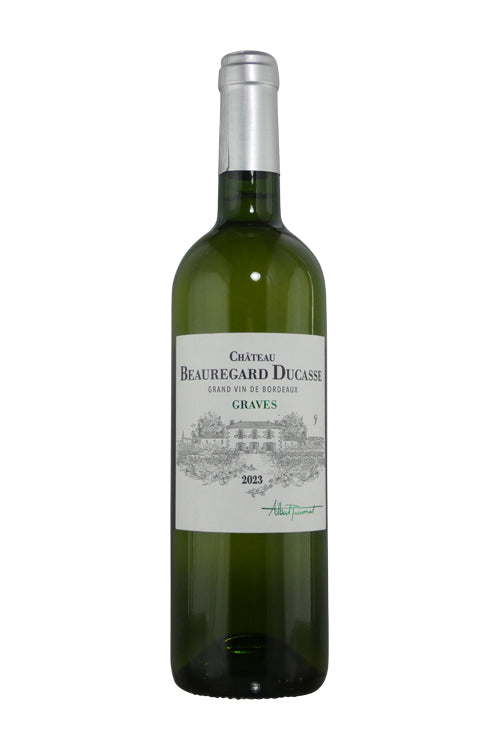1
/
of
1
Château Beauregard Ducasse Graves Blanc - 2023 (750ml)
Château Beauregard Ducasse Graves Blanc - 2023 (750ml)
Regular price
$16.99
Sale price
$16.99
Regular price
$19.99
Unit price
/
per
Availability:
8 In Stock
$25 Shipping on Orders +$299
Couldn't load pickup availability
Share :

- varietal
- Region
- Sub - Region
- Type
- Reviews
Sauvignon Blanc is one of the most well known, popular, and distinctive varieties. Its base in the Old World is still strong, producing the famous wines of Sancerre and Pouilly Fume in the Loire Valley as well as much of southwest France, including Bordeaux where it is thought to have originated as a result of a spontaneous field crossing of Cabernet Sauvignon. Within the appellations of Graves and Entre-Deux-Mers, it makes fine dry whites, blended with Semillon, Muscadelle and Ugni Blanc. However its importance is not to be overlooked in neighboring Sauternes helping form some of the world's most sought after dessert wines. On the other side of the world New Zealand's association with the grape has become so strong the two are almost synonymous. On the whole they tend to be bolder with more pungent exotic aromas that their European counterparts. It is also cultivated to a large extent in South Africa, Chile, Australia, and California. Initially coined and marketed by Robert Mondavi as Fume Blanc, the Californian versions were aged in a little oak in order to tame the grassy quality, although now Fume Blancs may refer to unoaked Sauvignon too. Common tasting notes include, grass, gooseberries, lemon, and grapefruit from cooler regions. Riper, sweeter fruit notes such as melons, figs and pears are found in warmer climate renditions. Careful oak ageing can develop more weight and complexity, sometimes displaying tropical mandarin and stone fruit.
Located in South West France, Bordeaux is one of the World’s most important wine producing regions. The Gironde estuary and its two tributaries, the Garonne and Dordogne, splits the region into the ‘left bank’ and ‘right bank’. The left bank, on the west side of the Gironde, consists of the Médoc and Graves, while Pomerol and St. Emilion are located on the right bank. In between the Garonne and Dordogne is the Entre-Deaux-Mers region, French for 'between two seas'. From north to south the Médoc includes the famous classed growth chateaux in the communes of St. Estephe, Paulliac, St.Julien, and Margaux. The Graves and it’s enclave Pessac-Léognan make both red and white wine. While those of Pessac- Léognan’s are dry, Sauternes and Barsac make world-famous sweet whites. Although Bordeaux makes some of the world’s most expsenive wines, less expensive but good value alternatives come from Moulis and Listrac on the left and Bourg and Blaye on the right offer less expensive wines for earlier consumption.
Pauillac is an important commune of the Medoc on the left bank of Bordeaux's Gironde estuary. Sandwiched between St. Estephe to the north and St. Julien so the south, the village boasts three of the Medoc’s five first growths ranked in the official Classification of 1855. They include Chateau Lafite, Latour, and Mouton. It is also home to no less than 12 fifth growths, whose fierce competition has led to a increase in the standard of their wine. Consequently, at a fraction of the price, they are often considered are great deal when compared to first growths and even “super seconds”.
White wine is a wine whose color can be pale-yellow, yellow-green, and yellow-gold colored. The wine is produced from a variety of grape varieties. The flavor and color comes from the juice of the grape and sometimes the skin of the grape as well. Interestingly, not all white wine comes from white grapes. Some select red grapes are used as in Champagne.


